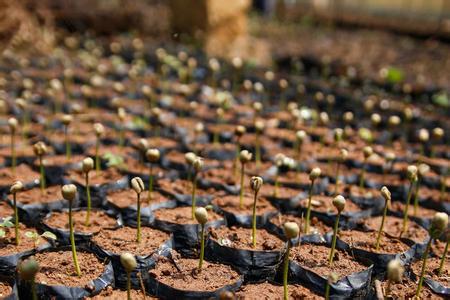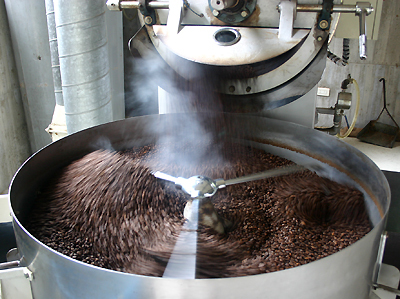A brief introduction to the varieties of grinding scale of Tarazhu coffee beans in Costa Rica by the method of describing taste and flavor
A brief introduction to the varieties of grinding scale of Tarazhu coffee beans in Costa Rica by the method of describing taste and flavor
Tara beads have long been known as the origin of coffee beans, and high-quality beans receive an extra bonus during the coffee harvest, and only beans selected by strict cups are released from the stock according to Fancy specifications. The most recent drink of this Tara bead, high altitude SHG grade, is produced in the Tarazhu area more than 1500 meters above sea level, facing the Pacific side of a small-scale plantation. It is a very hard bean, it has a strong mellow, the acidity is just right, not as strong as ordinary Costa Rican beans, especially when it is used to make Italian coffee.
Costa Rica always prides itself on its exquisite water-washed coffee. It always picks ripe coffee fruits by hand and strictly controls the process of soaking and fermentation. the coffee produced under this process has an excellent balance between clean flavor and taste complexity; it has always been highly regarded in the industry.
Yellow honey: about 40% of the pectin is removed; the drying method requires the most direct heat absorption, receives the most light drying, and lasts for about 8 days to reach a stable water content.
Red honey: about 25% of the pectin is removed; it takes longer to dry than yellow honey, and reduces direct exposure to sunlight, even in shading sheds, lasting about 12 days.
Black honey: hardly remove pectin; dry for the longest time, lasting at least 2 weeks, with a cover to avoid too strong sunlight, prevent drying too fast, and make sugar conversion more fully.

Important Notice :
前街咖啡 FrontStreet Coffee has moved to new addredd:
FrontStreet Coffee Address: 315,Donghua East Road,GuangZhou
Tel:020 38364473
- Prev

Brief introduction of Columbia Huilan Coffee Variety produced by the method of texture Grinding scale treatment
Brief introduction of Columbia Huilan Coffee Variety taste Grinding Calibration method Bean is Huilan with medium and deep roasting degree of Brother Bird, and the apparatus is Harrio V01, choosing the ratio of powder to water at 1:12 (that is, 25g coffee powder to extract 300ml coffee liquid). It seems random, but in fact, according to the baking degree of beans, the substances with good coffee powder are released quickly and more.
- Next

Description of acidity and flavor of Sumatra coffee beans A brief introduction to the grinding scale of taste treatment
Description of acidity and flavor of Sumatran coffee beans A brief introduction to the grinding scale because coffee beans have four layers of protective pericarp, pectin, seed shell and silver skin. In the washing method, only the first two layers were removed, and the seed shell and silver coat were preserved and dried in the sun. In the wet planing method, however, the third and fourth layers of protection are removed midway, that is, the falling body is sunbathed, which is the blue-green color of Sumatra raw beans.
Related
- Detailed explanation of Jadeite planting Land in Panamanian Jadeite Manor introduction to the grading system of Jadeite competitive bidding, Red bid, Green bid and Rose Summer
- Story of Coffee planting in Brenka region of Costa Rica Stonehenge Manor anaerobic heavy honey treatment of flavor mouth
- What's on the barrel of Blue Mountain Coffee beans?
- Can American coffee also pull flowers? How to use hot American style to pull out a good-looking pattern?
- Can you make a cold extract with coffee beans? What is the right proportion for cold-extracted coffee formula?
- Indonesian PWN Gold Mandrine Coffee Origin Features Flavor How to Chong? Mandolin coffee is American.
- A brief introduction to the flavor characteristics of Brazilian yellow bourbon coffee beans
- What is the effect of different water quality on the flavor of cold-extracted coffee? What kind of water is best for brewing coffee?
- Why do you think of Rose Summer whenever you mention Panamanian coffee?
- Introduction to the characteristics of authentic blue mountain coffee bean producing areas? What is the CIB Coffee Authority in Jamaica?

